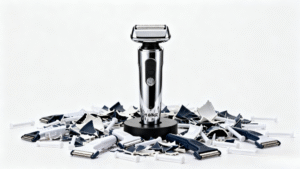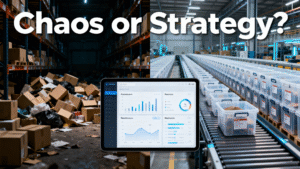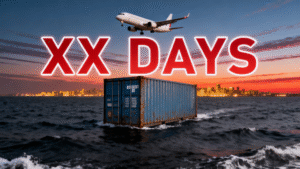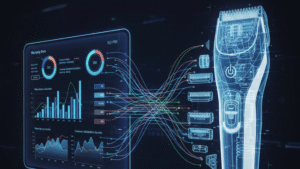Basing your 2026 financial plan on this year’s factory price is one of the most common and dangerous mistakes a brand can make. A successful cost forecasting strategy requires a deeper understanding of what you’re actually paying for. This guide will break down the key components of the Factory Costs for a body trimmer. By understanding these individual drivers, you can build a more accurate forecast and a more resilient Procurement Budget for the year ahead.
You’re deep in the planning stages for your 2026 product line, trying to set budgets, retail pricing, and profit margin goals. But with news of volatile material prices and shifting labor rates, how can you confidently budget for a product that won’t be produced for another six months?
1. The Core Component: Raw Material Costs
This is the largest and most volatile portion of your total manufacturing costs. For a complex electronic device like a body trimmer, this isn’t just one material; it’s a basket of different commodities, each with its own market dynamics.
- Plastics (ABS/PC): The main housing, charging stand, and guard combs are typically made from ABS or Polycarbonate. The cost of these polymers is directly linked to global oil prices. Keep an eye on energy market trends to anticipate shifts here.
- Metals (Blades): The blades are a key cost driver. Standard stainless steel is relatively stable, but if your product uses premium materials like titanium or zirconia ceramic, their prices can fluctuate based on demand from other industries (like aerospace and medical devices).
- Electronics (PCBA, Motor, Battery): The “brains” and “heart” of your device. The costs for the PCBA (Printed Circuit Board Assembly), motor, and Lithium-ion battery are tied to the semiconductor market and the prices of raw materials like copper and lithium. This category has seen the most price volatility in recent years.
Forecasting Tip: Your supplier is your best source of information. Ask them about their price forecasts for key materials over the next 6-12 months. Experienced factories have deep insights into their own supply chains.

2. The Human Element: Manufacturing Labor Costs
The second major component of factory costs is the money paid to the skilled workers who assemble, test, and package your product.
- Location Matters: Labor costs vary significantly by region. A factory in a major coastal hub like Shenzhen will have higher labor costs than one in an inland province of China or in Vietnam.
- Annual Increases: It is a standard practice for manufacturing wages in Asia to increase annually, typically after the Chinese New Year holiday.
- Product Complexity: A groomer with a complex design and a high number of parts requires more manual assembly steps, which directly increases the labor cost per unit.
Forecasting Tip: When budgeting for 2026, it is a safe and prudent practice to automatically build in a 5-10% year-over-year increase for the labor portion of your product’s cost.

3. A Practical Tool: The Bill of Materials (BOM)
So how do you track all these different costs? The most critical tool in your cost forecasting arsenal is the Bill of Materials, or Bill of Materials (BOM). A BOM is a detailed, itemized list of every single component required to build your product, from the main housing down to the smallest screw, along with the cost of each.
An itemized, costed BOM is the foundation of an accurate forecast. It allows you to see exactly where your money is going and which components are most susceptible to price changes. Always insist that your manufacturing partner provide you with a detailed BOM. This transparency is a hallmark of a professional and trustworthy supplier.
Here is a simplified example of a costed BOM for a body trimmer:
| Component | Material / Spec | Estimated Cost (USD) | 2026 Forecast Notes |
| Main Housing | ABS Plastic | $1.50 | Monitor oil prices; expect slight increase. |
| Blade Set | Titanium-Coated Steel | $2.00 | High demand; budget for a 10-15% increase. |
| Motor | 3.7V DC Motor | $1.25 | Relatively stable component. |
| PCBA | Electronics | $1.00 | High volatility; budget for a 15-20% increase. |
| Li-ion Battery | 1200mAh | $1.75 | Lithium prices are volatile; budget for a 15-20% increase. |
| Packaging | Paperboard Box & Insert | $0.75 | Paper prices are stable; expect minimal change. |
| Labor & Overhead | Assembly, QC, Margin | $1.75 | Assume a 7% annual labor cost increase. |
| TOTAL FACTORY COST | $10.00 | Forecasted 2026 Cost: ~$11.25 |

4. Putting It All Together: Creating Your 2026 Forecast
With a clear understanding of the cost components, you can now build your forecast.
- Get a Baseline BOM: Start with your most recent, detailed, costed BOM from your supplier. This is your 2025 baseline.
- Research Macro Trends: Do some high-level research on the market forecasts for your key raw materials (polymers, copper, lithium).
- Talk to Your Supplier: This is the most important step. Share your sales forecast for 2026 and ask them for their projected cost increases for your specific product.
- Build a Forecasting Model: Create a simple spreadsheet. List every component from your BOM in a column. In the next column, put its current cost. In a third column, apply a conservative percentage increase based on your research and supplier feedback.
- Add a Contingency Buffer: The future is unpredictable. To ensure your Financial Planning is sound, always add a 5-10% contingency buffer to your final forecasted cost. This is a critical part of Risk Management.

Conclusion: From Guesswork to Strategy
Forecasting factory costs for an upcoming year isn’t about gazing into a crystal ball. It’s a strategic process of deconstruction and analysis. By breaking down your total cost into its core components—materials, labor, and overhead—and by working transparently with your manufacturing partner, you can move from reactive guesswork to proactive planning.
A well-researched forecast is the foundation of your entire business strategy for 2026. It allows you to build an accurate Procurement Budget, set confident retail pricing, and protect your profit margins in a volatile global market.





